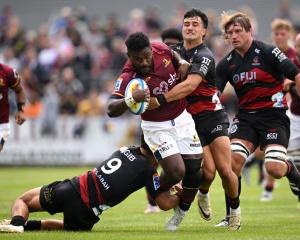A new study that involved monitoring a Canterbury premier grade side for an entire season has found surprisingly few injuries resulted from tackling.
The new study, published in the prestigious British Journal of Sport Medicine, followed premier grade players from the Lincoln University Rams over a complete season.
Lincoln University Professor Mike Hamlin and Sohei Takamori, the team doctor for Japan, were among the co-authors.
The study involved 28 Rams players over 18 matches in the 2017 rugby season.
The aim was to identify whether the RugbySmart safe tackle technique was exhibited by club rugby players and whether tackle-related injuries showed poor technique characteristics.
Hamlin said one of the most interesting results of the study was the very low injury rate attributed to tackling. It worked out to be about two injuries per 1000 tackles made over the whole season, far lower than previous reports.
"This may have been due to the high calibre of players used in this study (all playing for the Lincoln University Rams Div 1 Team) and their prior experience and knowledge of tackling," Hamlin says.
"A major emphasis of the coaching staff on safety during training was also probably a factor in the low injury rates."
The research showed forwards completed more tackles than backs and tackles using the shoulder were the most prevalent type.
The study found that only 57.9 per cent of tackles made during the season demonstrated the currently prescribed good tackle technique.
Two of the six tackle-related injuries occurred in spite of the RugbySmart tackle characteristics being performed.
However, in all six injuries recorded over the season, the front foot was grounded and close to the ball-carrier which is one of the characteristics of the desired tackle technique as promoted by RugbySmart, and yet resulted in injury.
The authors concluded further research is needed to confirm which tackling techniques are less likely to result in injury.
*Https://bjsm.bmj.com/content/early/2022/01/17/bjsports-2021-104868













